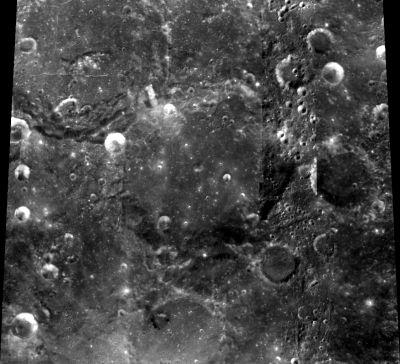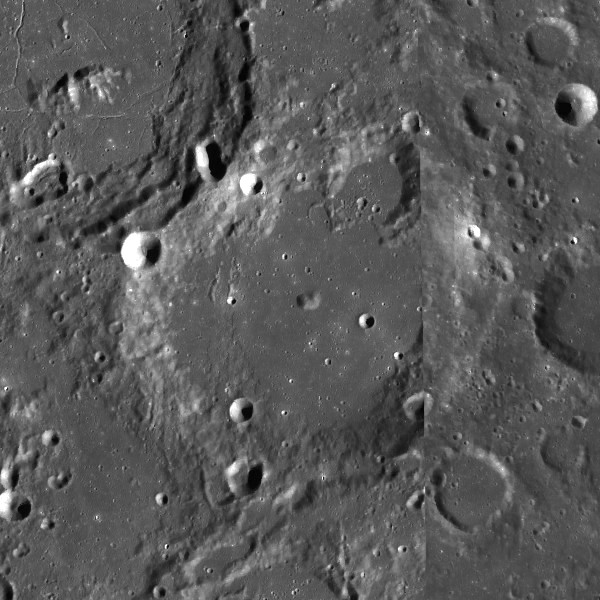Röntgen
Contents
[hide]Röntgen - with Nernst on the floor of Lorentz
| Lat: 33.0°N, Long: 91.4°W, Diam: 126 km, Depth: 3.25 km, Rükl: (farside) |


left: Clementine . right: LROC Note the vertical 90°W image seam at right border.
In both photographs, Rontgen is the central crater, the crater near the upper left corners of both frames is Nernst.
Images
LPOD Photo Gallery Lunar Orbiter Images
See page Lorentz for four Lunar Orbiter 4 photographs of Rontgen (this crater is part of the Lorentz-Nernst-Rontgen group).- DannyCaes Feb 10, 2014
Maps
(LAC zone 36C3) USGS Digital Atlas PDF
Description
Description: Wikipedia
Additional Information
Depth data from Kurt Fisher database
- Westfall, 2000: 3.25 km
Small hillock at the centre of Rontgen's floor. Is this hillock only the uppermost part of the once pronounced central peak? - DannyCaes Feb 9, 2014
Nomenclature
- Wilhelm Conrad Röntgen (March 27, 1845 – February 10, 1923) was a German physicist, who, on 8 November 1895, produced and detected electromagnetic radiation in a wavelength range today known as x-rays or Röntgen rays, an achievement that earned him the first Nobel Prize in Physics in 1901.
- Name given by Arthur and Whitaker in Rectified Lunar Atlas (1963) and approved by IAU in 1964 (Whitaker, 1999, p234).
LPOD Articles
Bibliography